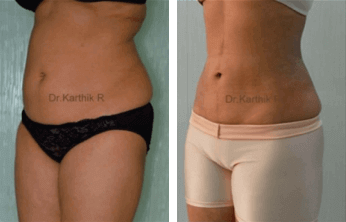Anthropometric Measurements and Analysis for Objective Assessment of Gynecomastia Surgery Results

Background
Gynecomastia surgery is one of the most common aesthetic procedures in males. There is a lack of objective analytical parameters to judge outcomes. In this study, the authors aim to introduce novel anthropometric measurements and analysis techniques for the objective assessment of surgical outcomes based on specific aesthetic targets.
Objectives
To introduce quantification of gynecomastia surgery outcomes and compare the results among the different grades of gynecomastia.
Methods
A total of 192 patients with gynecomastia were included. The patient cases were grouped according to grades and a set of anthropometric measurements were taken both before the operation and 6 months postoperatively. Liposuction and glandular excision were done through minimal incisions in all grades of gynecomastia, with the addition of ultrasound and nipple areola complex (NAC) lifting plaster in selected Grade 3 and all Grade 4 cases.
Results
A statistically significant improvement in the perimeter of the triangular relationship of sternal notch and nipples, the elevation of the NAC, the reduction of the area of the NAC, and the correction of asymmetry of the chest were seen in all grades of gynecomastia, with increased differences in higher grades.
Read more: https://academic.oup.com/asjopenforum/article/doi/10.1093/asjof/ojad073/7235865












